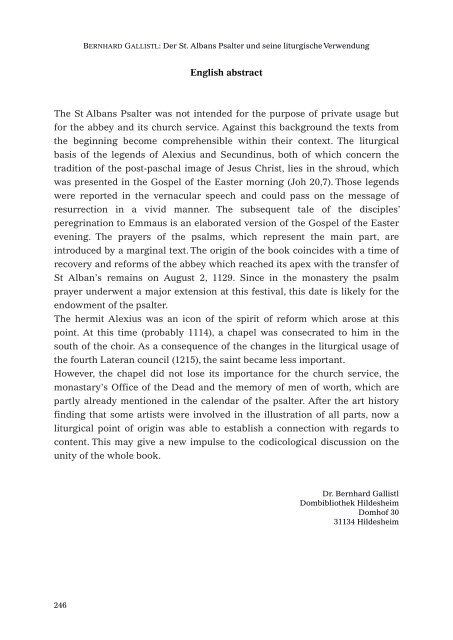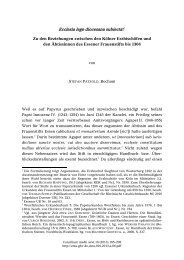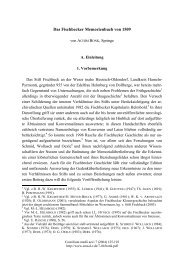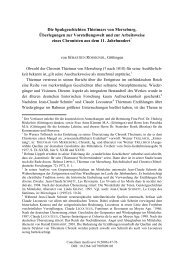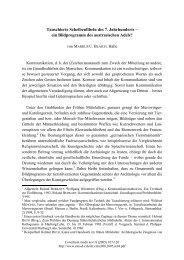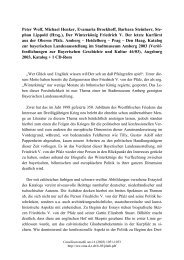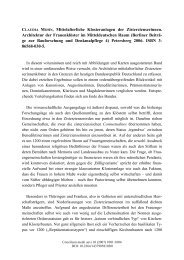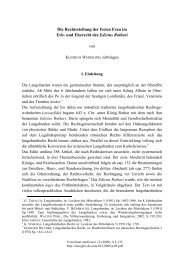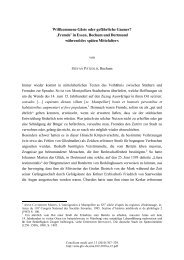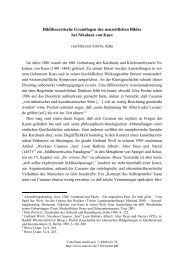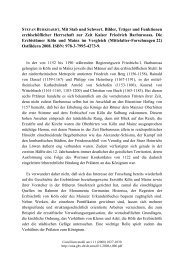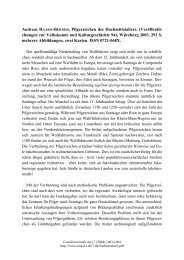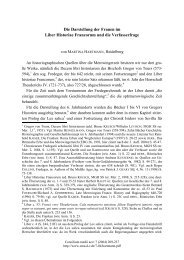Der St. Albans Psalter und seine liturgische Verwendung
Der St. Albans Psalter und seine liturgische Verwendung
Der St. Albans Psalter und seine liturgische Verwendung
Sie wollen auch ein ePaper? Erhöhen Sie die Reichweite Ihrer Titel.
YUMPU macht aus Druck-PDFs automatisch weboptimierte ePaper, die Google liebt.
246<br />
BERNHARD GALLISTL: <strong>Der</strong> <strong>St</strong>. <strong>Albans</strong> <strong>Psalter</strong> <strong>und</strong> <strong>seine</strong> <strong>liturgische</strong> <strong>Verwendung</strong><br />
English abstract<br />
The <strong>St</strong> <strong>Albans</strong> <strong>Psalter</strong> was not intended for the purpose of private usage but<br />
for the abbey and its church service. Against this backgro<strong>und</strong> the texts from<br />
the beginning become comprehensible within their context. The liturgical<br />
basis of the legends of Alexius and Sec<strong>und</strong>inus, both of which concern the<br />
tradition of the post-paschal image of Jesus Christ, lies in the shroud, which<br />
was presented in the Gospel of the Easter morning (Joh 20,7). Those legends<br />
were reported in the vernacular speech and could pass on the message of<br />
resurrection in a vivid manner. The subsequent tale of the disciples’<br />
peregrination to Emmaus is an elaborated version of the Gospel of the Easter<br />
evening. The prayers of the psalms, which represent the main part, are<br />
introduced by a marginal text. The origin of the book coincides with a time of<br />
recovery and reforms of the abbey which reached its apex with the transfer of<br />
<strong>St</strong> Alban’s remains on August 2, 1129. Since in the monastery the psalm<br />
prayer <strong>und</strong>erwent a major extension at this festival, this date is likely for the<br />
endowment of the psalter.<br />
The hermit Alexius was an icon of the spirit of reform which arose at this<br />
point. At this time (probably 1114), a chapel was consecrated to him in the<br />
south of the choir. As a consequence of the changes in the liturgical usage of<br />
the fourth Lateran council (1215), the saint became less important.<br />
However, the chapel did not lose its importance for the church service, the<br />
monastary’s Office of the Dead and the memory of men of worth, which are<br />
partly already mentioned in the calendar of the psalter. After the art history<br />
finding that some artists were involved in the illustration of all parts, now a<br />
liturgical point of origin was able to establish a connection with regards to<br />
content. This may give a new impulse to the codicological discussion on the<br />
unity of the whole book.<br />
Dr. Bernhard Gallistl<br />
Dombibliothek Hildesheim<br />
Domhof 30<br />
31134 Hildesheim


